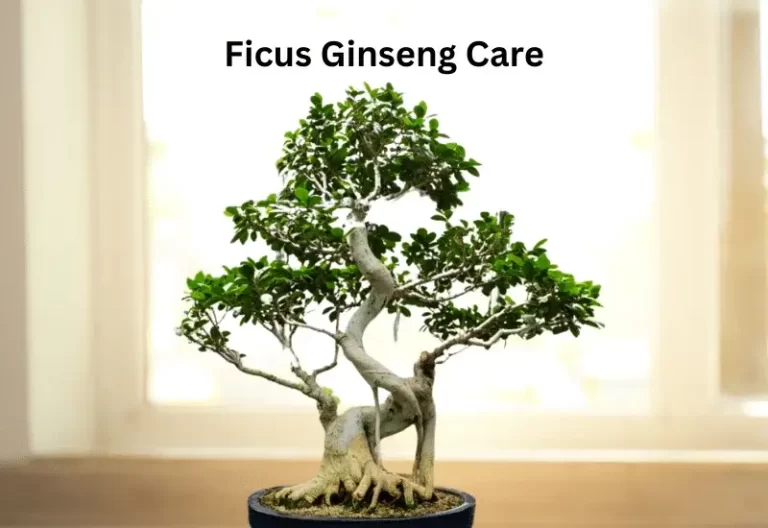10 Important Ficus Ginseng Care and Growth tips
Ficus Ginseng, a favored houseplant, is well-known for its captivating appearance and low-maintenance requirements. This unique plant is a delightful addition to any indoor space with its glossy leaves and intriguing aerial roots.
| Characteristic | Details |
| Scientific Name | Ficus microcarpa subsp. retusa |
| Common Name | Ficus Ginseng |
| Family | Moraceae |
| Type | Evergreen Tree |
| Native to | Southeast Asia |
| Morphology | Small, glossy leaves; aerial roots |
| Size | Typically 12-20 inches (30-50 cm) |
| Light Requirements | Bright, indirect light |
| Temperature Range | 65-75°F (18-24°C) |
| Humidity | Moderate to high |
| Watering | Allow soil to partially dry between watering |
| Fertilization | Monthly during the growing season |
| Pruning | Regular trimming for shaping and size control |
| Potting Soil | Well-draining, loamy soil |
| Pests and Diseases | Susceptible to aphids and mealybugs |
| Benefits | Air purification, stress reduction |
| Challenges | Sensitive to overwatering, needs proper humidity |
| Popular Cultivars | ‘Moclame,’ ‘Golden Coin,’ ‘Green Island’ |
| Sustainability | Ethical sourcing, sustainable cultivation practices |
| Aesthetics | Ideal for bonsai and interior decor |
Ideal growing conditions and maintenance
| Light Requirements | Bright, indirect light |
| Temperature Range | 65-75°F (18-24°C) |
| Humidity | Moderate to high |
| Watering | Allow soil to partially dry between watering |
| Fertilization | Monthly during the growing season |
| Pruning | Regular trimming for shaping and size control |
| Potting Soil | Well-draining, loamy soil |
| Pests and Diseases | Susceptible to aphids and mealybugs |
| Challenges | Sensitive to overwatering, needs proper humidity |
| Popular Cultivars | ‘Moclame,’ ‘Golden Coin,’ ‘Green Island’ |
| Sustainability | Ethical sourcing, sustainable cultivation practices |
| Aesthetics | Ideal for bonsai and interior decor |
Notable Ficus ginseng cultivars
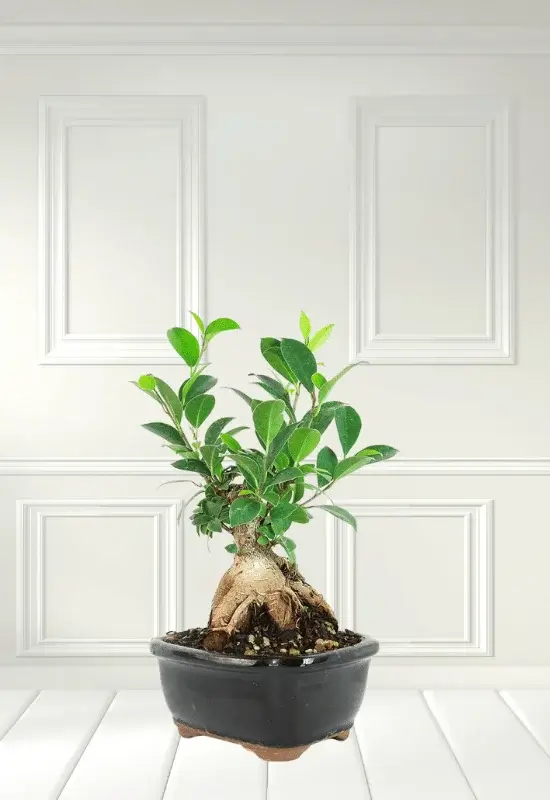
Ficus Ginseng, scientifically known as Ficus microcarpa subsp. retusa is a versatile plant with several notable cultivars, each possessing unique features and characteristics. Here, we delve into a few of the most popular Ficus Ginseng cultivars:
Ficus microcarpa (Moclame)
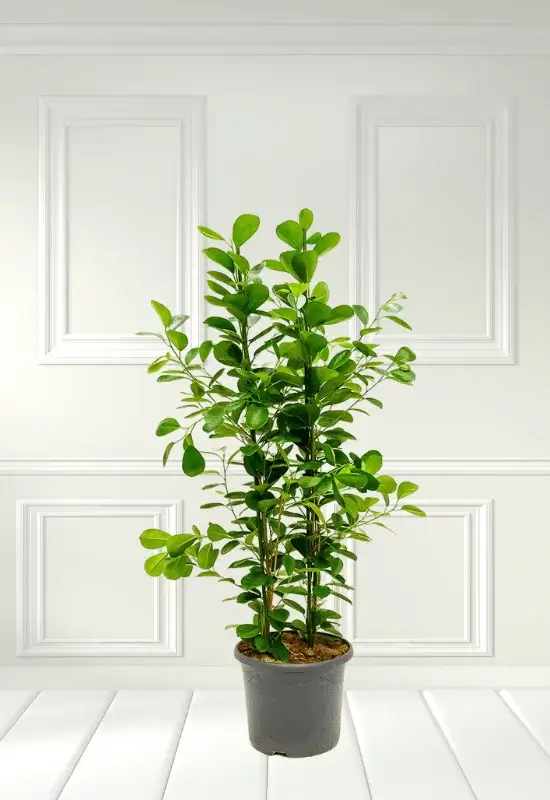
‘Moclame’ is highly regarded for its distinctive and captivating appearance. This cultivar is characterized by its elegantly twisted trunks, which give it an artistic and sculptural quality. The glossy, deep green leaves create a striking contrast against the twisting trunks. ‘Moclame’ is a preferred choice for those looking to add a touch of elegance and drama to their indoor spaces.
Ficus microcarpa (Golden Coin)
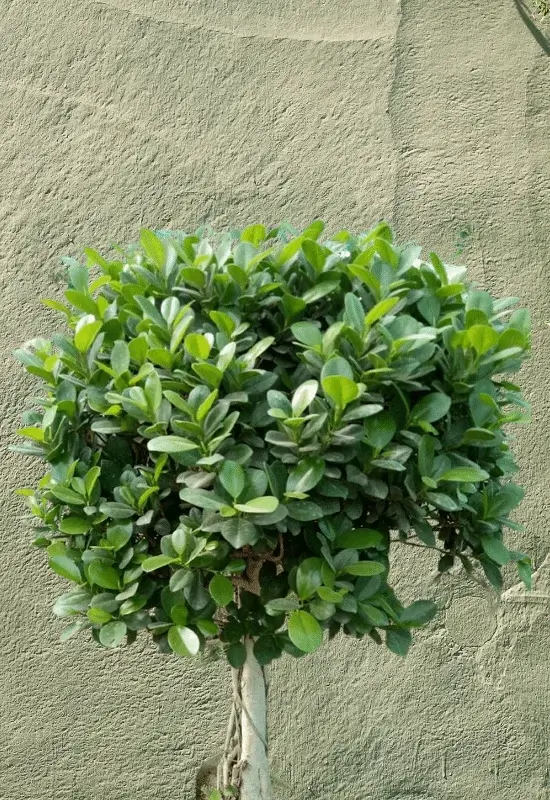
The ‘Golden Coin’ cultivar is recognized for its unique foliage. Its leaves are a striking golden-yellow, making it stand out among other Ficus Ginseng varieties. This vibrant coloration adds a touch of brightness and warmth to your indoor environment. ‘Golden Coin’ typically maintains a compact size, making it an excellent choice for smaller living spaces or as a centerpiece in your home.
Ficus microcarpa (Green Island)
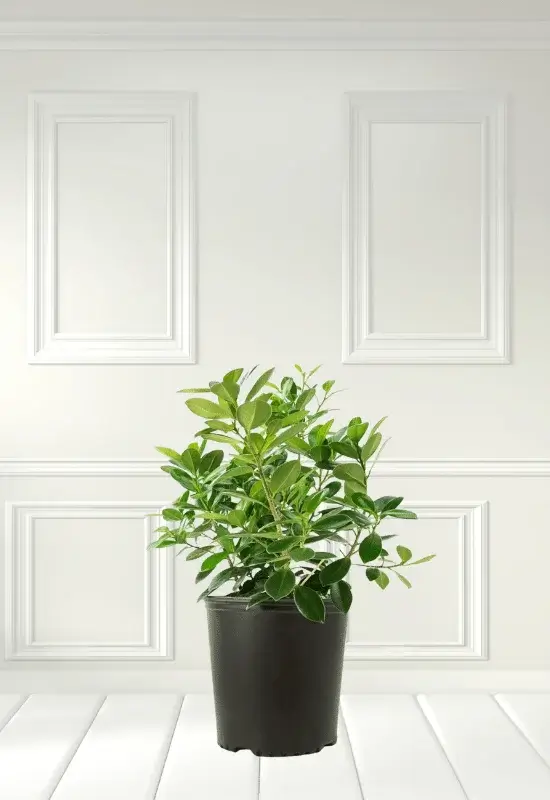
‘Green Island’ is appreciated for its bushier growth habit and smaller, dense leaves. This cultivar’s lush, green foliage gives it a more vibrant and “jungle-like” appearance than other Ficus Ginseng varieties. ‘Green Island’ is often chosen for its adaptability and versatility, making it a suitable candidate for bonsai projects and indoor decoration.
Each of these Ficus Ginseng cultivars has its unique charm and aesthetic appeal, allowing you to choose the one that best suits your preferences and the ambiance you want to create in your living space.
Common Care Issues and Solutions
Overwatering
Issue: Ficus Ginseng is susceptible to root rot if overwatered.
Solution: Allow the top layer of the soil to dry out before watering. Ensure proper drainage in the pot, and consider a well-draining soil mix.
Underwatering
Issue: Insufficient watering can lead to leaf drop and a stressed plant.
Solution: Water the plant when the top inch of soil feels dry. Be consistent, but avoid waterlogging the soil.
Low Humidity
Issue: Dry indoor air can cause the plant’s leaves to turn brown and fall off.
Solution: Increase humidity by misting the leaves regularly, using a humidity tray, or placing a humidifier nearby.
Pests and Diseases:
Issue: Common pests like aphids and mealybugs can infest Ficus Ginseng.
Solution: Inspect the plant regularly and remove any visible pests. For severe infestations, consider using a mild, plant-safe insecticide.
Pruning Mistakes:
Issue: Incorrect pruning can affect the plant’s shape and growth.
Solution: Prune strategically to maintain the desired shape. Use sharp, clean pruning shears and avoid excessive pruning at one time.
Inadequate Lighting:
Issue: Ficus Ginseng requires bright, indirect light. Insufficient light can lead to weak growth and yellowing leaves.
Solution: Place the plant near a bright window but out of direct sunlight. Rotate the pot occasionally for even growth.
Repotting Stress:
Issue: Repotting can stress the plant, leading to leaf drop.
Solution: Repot only when necessary, and choose a slightly larger pot. Be gentle when handling the roots and provide extra care after repotting to help the plant recover.
Aesthetic considerations and pot choices
When displaying Ficus Ginseng, careful attention to aesthetics and pot selection can enhance its visual appeal. Here are some considerations:
Pot Choice: Select a pot that complements the plant’s aesthetics. Traditional ceramic pots or minimalist, neutral-coloured containers often work well.
Size: Choose a pot that provides space for root growth but doesn’t dwarf the plant. An appropriately sized pot ensures balance.
Interior Design: Consider the style of your interior space. Depending on the pot and arrangement, Ficus Ginseng can fit into modern, rustic, or traditional decor.
Grouping: Clustering several plants can create a striking display and add greenery to a room.
Sustainable cultivation and ethical sourcing
Sustainable practices in Ficus Ginseng cultivation and ethical sourcing are essential for preserving these plants and minimizing their environmental impact. Here are some key points:
Sustainable Cultivation: Nurseries and growers can adopt sustainable practices using eco-friendly potting materials, minimizing chemical use, and reducing waste.
Ethical Sourcing: When purchasing the plant, consider the source. Choose nurseries or suppliers that adhere to moral and legal standards, especially when dealing with wild-collected specimens.
Wild Collection: In some cases, Ficus Ginseng may be harvested from the wild. Sustainable practices include obtaining proper permits and ensuring minimal disruption to natural habitats.
Summary
With its captivating appearance and numerous cultivars, Ficus Ginseng adds beauty and tranquillity to indoor spaces. Proper care, pot selection, and ethical sourcing are essential for its well-being and conservation. Whether a beginner or an enthusiast, Ficus Ginseng offers a touch of nature and serenity to your home decor, making it an excellent choice for plant lovers.
Faqs About Ficus Ginseng
1. What is Ficus Ginseng, and how is it different from other Ficus plants?
Ficus Ginseng, scientifically known as Ficus microcarpa subsp. retusa is a variety of Ficus with unique aerial roots and glossy leaves. It’s often grown as a bonsai. While it shares the Ficus genus with other houseplants, its distinctive features make it stand out.
2. What are the ideal growing conditions for Ficus Ginseng?
It thrives in bright, indirect light, with temperatures between 65-75°F (18-24°C). It requires moderate to high humidity and well-draining soil. Water it when the top inch of soil dries out.
3. Can I grow Ficus Ginseng in low light conditions?
While it prefers bright, indirect light, it can tolerate lower light conditions but may grow more slowly and have fewer leaves. It’s best to provide it with as much light as possible.
4. How often should I water my Ficus Ginseng?
Water your plant when the top inch of soil is dry. Overwatering can lead to root rot, so letting the soil partially dry between waterings is essential.
5. What are the common issues when caring for Ficus Ginseng?
Common care issues include overwatering, underwatering, low humidity, pests (such as aphids and mealybugs), and pruning mistakes. Striking the right balance between care and maintenance is critical.
6. Can I shape Ficus Ginseng into a bonsai tree?
Ficus Ginseng is often shaped into bonsai trees due to its pliable branches and unique roots. Pruning and wiring can help you create the desired bonsai form.
7. Are there any health benefits to having Ficus Ginseng in my home?
Ficus Ginseng can help purify indoor air by filtering out pollutants. Additionally, having indoor plants like Ficus Ginseng has been shown to reduce stress and improve well-being.
8. What are some popular Ficus Ginseng cultivars?
Notable cultivars include ‘Moclame,’ known for its twisted trunks; ‘Golden Coin,’ with golden-yellow leaves; and ‘Green Island,’ recognized for its bushier growth and smaller leaves.
9. How can I ensure the ethical sourcing and sustainability of Ficus Ginseng?
When purchasing Ficus Ginseng, choose nurseries and suppliers that adhere to ethical and legal standards. Consider the source of the plant and whether it was sustainably cultivated or responsibly collected.
10. What are some tips for displaying Ficus Ginseng in my home or office?
Consider a pot selection that complements your interior decor. Grouping multiple plants can create an attractive display. Proper placement and lighting are also essential for its visual appeal.




